Conservation can become a Bioviable Green Economy, Cryptocurrency Protecting Biodiversity, Saving Ecosystems,
Since my background is in ecology and wildlife conservation, and project development, I have worked for 15 years in wildlife conservation and researching into ways to help fund indigenous people who are the guardians of the Amazon rainforest. This project is now open to crowdsourcing invitation, I have also submitted it to various academic experts and institutes in ecology and green economy to gain stronger collaborative support on the ecological field surveying and research side.
Introduction
The Biobank is an ecosolution, the concept is a biodiversity land trust. Our objectives are for the conservation of biodiversity and nature, especially the Amazon rain forest, where over 50 percent of the world's biodiversity exists in vast areas on untouched Amazon, and we want to keep it that way. However, this can be used as a blueprint to protect any biome from cloud forests, savanahs, coral reefs, mangroves, tundra and all rare wilderness.
The goal is to protect rainforest biodiversity with a biodiversity landtrust and cryptocurrency revenue generated from the goods and services of the rainforest and its preservation becoming more valuable and more revenue is generated the longer it is kept and legally protected in the biodiversity land trust. The general public and investors can become sponsoring stakeholders of the Amazon biodiversity protection and in return they can buy and sell cryptocurrencies generated against the protected value of primary untouched rainforest, that is also generating ecological value from its natural biodiversity goods and services, the longer it is left undisturbed, through a renewable contract within the trust spanning from 5 to 50 years.
Today, biodiversity rich areas of the world are a critically endangered and a limited natural resource. Our revolutionary system of conservation will use cryptocurrency based on natural economy principles to put value on ecosystems such as rainforest and other biomes. Our approach benefits not only the future of the land we are conserving, but also creates a sustainable income for the custodians and conservationists of nature reserves and land owners who are mostly indigenous people and who often struggle and due to financial pressures are forced to sell rain forest or give up their land to large corporations. Corporations want short- term financial gain for the oil or other natural resources in the rain forest.
Therefore, the ultimate price that is paid, is that the forest which took thousands of years to evolve with biodiverse rich species, are all destroyed in weeks of deforestation for oil drilling or mining. This is a way for conservation to become a viable green economy and empower conservationists to spend more time protecting the last remaining areas of our natural world while earning a respectable living from doing so.
The Biobank will be an empowering change to the conservation of biodiversity and nature, putting value on ecosystems that will benefit not only the future of the planet but create an income for the local indigenous and native custodians of nature reserves such as vast areas of biodiverse rainforest that has not been given an ecological value before today, yet we know that this ecological value is infinitely worth more in the bank balance and when measured against any other monetary value than any amount of oil or gold extracted from the rainforest, therefore our goal is in the very act of creating this value in cryptocurrencies, we can start to make people aware of how much more valuable it is kept intact than sold off to oil companies or mining companies for devastating consequences.
This is a pioneering project with the aim to put value back into conservation, 25 years ago, If I was asked to put financial value on nature, I'd say no, but now, it seems to be the only way to make even those who don't care about nature take notice. Today, biodiversity rich areas of the world are a critically endangered and a limited natural resource. We are living in the Sixth Greatest Mass extinction because of our addiction to oil. It is an apocalypse happening in slow motion which affects all of the earth’s biodiversity which took 3.8 billion years of evolution to form. This extinction differs from previous extinctions in that it is caused by humans, not by natural causes, as we are the cause, we can also slow it down or prevent it, if we make big changes. While governments are aware of this and we continue to accelerate it, each year, and this affects every single species and ecosystem on the planet, nothing is being done to protect biodiversity. According to recent scientific data, animals and plants are disappearing at a rate of between 75 and 150 species per day. There may be no rainforest left in twenty years’ time or fish in the ocean in ten years’ time and over half the world will have a water crisis fifteen years from now. Bees are our most important crop pollinators and are fast disappearing and the rate of deforestation and ocean pollution is destroying these keystone ecosystems, which are drastically affected by man’s own actions.
Needs/Problems
As a result of corporations controlling politicians through legal bribery called lobbying and the misconception that we are not deeply connected to our environment, the ecosystems of our planet show signs of accelerated devastating impact; More than 50 percent of the world's biodiversity is held in the Amazon rainforests, which are rapidly disappearing; and with the current madness going on in Brazil, at last count through global satelite data, more than 93,000 fires were alight in the Brazilian Amazon this year, up more than 60 percent from the same time last year, and the highest number since 2010. Preliminary information from the Brazilian space office, INPE, shows that 1145 square kilometers of the world's most noteworthy rainforest has been cleared in August up until this point. New figures show the amount of the Amazon rainforest being cleared in Brazil this month has hit a record high. The most noticeable area of ecocide, is within the district of the northern province of Pará, where practically 50% of the clearances (513 sq km) have occurred. Deforestation, which is regularly done by hauling solid chains between heavy tractors, is ordinarily a prelude to drying out vegetation before fires are deliberately started to clear land for ranching.
Deforestation is speeding up under Brazil's new government Bolsonaro who has publicly displayed prejudice for indigenous people and encouraged these destructive activities in the name of ''development'' and the same in Ecuador as the Ecuadorian government with its ongoing addiction to oil, Ecuadorian and foreign oil companies continue to undermine the law where they ought to seek prior consultation with the Indigenous Ecuadorians for permission to enter or drill for oil. Indigenous people who have lived there for thousands of years are ignored and being bypassed with the excuse by the Ecuadorian government, that they have never lived there.
In Ecuador the government has broken its own laws by ignoring the rights of the Indigenous Shiwiar, Waorani, Achuar and Shiwiar whose ancestral land and territory happen to be on old oil reserves, although the Waorani recently won some protection rights in the court of law.
This is a criticall time, despite our present crisis; there is one last opportunity to make positive changes. We need to re-establish our lost connection with the Earth and the natural environment. All the current notions that man has dreamed up, create the illusion of us being separate from nature. This is, of course, completely ridiculous, as we are part of nature, we were shaped by our environment and this will never change. We have no choice in this matter nor can we afford to take a long time to understand this. It is necessary for us to accept the fact and take action individually, to lessen our human impact on Earth at our most vulnerable time. There is a slow emergence of academic literature and journals noting this crisis, a few even suggest ways in which we can re-evaluate managing our natural resources. A very recent journal article (W. Steffen et al, 2015), published in The Science Journal, entitled Planetary Boundaries: Guiding Human Development on a Changing Planet, states that humans have pushed the planet beyond boundaries to danger point, destabilizing important ecosystems. This not only affects biodiversity but ecosystems too, which are disregarded in human society, yet are the support systems for all life on Earth, and which need to be considered by the world economy.
Ecosystems such as bio-geo-chemical flows, are affected by industrial scale deforestation and agriculture, our global fresh-water supply is dwindling and our oceans are acidifying, oxygen depleted zones are more common in the ocean now and these have a drastic effect on marine life. Industrial scale extraction also results in industrial scale dumping and destruction. This reflects in the large scale environmental crisis and the accelerated rate of species extinction, a rate of extinction which is 1000 times greater than it was before humans were present on the Earth. It is estimated that around 75 to 150 entire species are disappearing every day. According to the Red List calculations of the IUCN (the International Union for Conservation of Nature), 22,413 of the world’s species are threatened with extinction and this number is increasing as further investigations are taking place.
We need to radically change the way we treat the goods and services of nature to preserve the future life of this planet.
Goals/Objectives
The Biobank Landtrust is the first of its kind, a biodiversity land trust. Our objectives are for the conservation of biodiversity and nature, especially the Amazon rain forest, where over 50 percent of the world's biodiversity exists in vast areas on untouched Amazon, and we want to keep it that way. Our revolutionary system of conservation uses cryptocurrency based on natural economy principles to put value on ecosystems such as rain forest and other biomes. Our approach benefits not only the future of the land we are conserving, but also creates a sustainable income for the custodians and conservationists of nature reserves and land owners who are mostly indigenous people and who often struggle due to financial pressures and eventually are forced to sell rain forest or give up their fight to protect land by military protected oil companies or large mining corporations.
The Amazon rainforest produces an infinite supply of goods and services in terms of food and materials for international trade. Some of these ecosystem services are well known including food, fibre and fuel provision and the cultural services that provide benefits to people through recreation and appreciation of nature. Other services provided by ecosystems are not so well known. These include the regulation of the climate, the purification of air and water, biodiversity protection and sustainability, soil formation and nutrient cycling. These services are not generally considered within policy appraisal at present and represent an area where a greater and more systematic focus would be very useful.
Ways to create value
When a biologist/ecologist surveys an area of nature for measuring species diversity, we use the cubic square foot or quadrat, in the same way we can place value on biodiversity in every cubic square foot of biodiversity in the rainforest, much of this biodiversity is not in the ground foliage, but more so in the tree canopies of the rainforest. We can calculate and measure the biodiversity value in one hectare and then we can produce certificates to the official value, that can be bought by the general public to sponsor /support each hectare that is preserved, the biological living hectares are like gold bars but the difference is they keep generating infinite value as goods and services because they contain organic ecosystems and species all playing a role in maintaining biodiversity, such as oxygen, pollination, and microbial activities, mammals, birds and insects which are fruit and seed dispersers and so on. This same model can be applied to any fragile ecosystem that needs protecting and to be valued.
So just looking at a cubic meter of the biodiversity and microbes in a cubic meter of soil. Scientist Edward Wilson takes fungi as a starting point to illustrate nature's abundance.
''So far, about 60,000 species of fungi have been discovered and studied, including mushrooms, rusts and moulds. But specialists estimate that more than 1.5m species exist on Earth. Along with them in the soil thrive some of the most abundant animals in the world, the nematodes, also known as roundworms. Tens of thousands of roundworm species are known, and the true number could be in the millions. Both fungi and roundworms are outdone dramatically in turn by still smaller organisms. In a pinch of garden soil, about a gram in weight, live millions of bacteria, representing several thousand species. Most of them are unknown to science.
In any living space, on the ground, in the forest shade, or in the water, we only see the huge creatures – Then in the tree canopies where most of the rain forest biodiversity lay there are bryophytes, orchids, fruit, tree branches, leaves taking in carbon dioxide, the Suns energy, and breathing out Oxygen while lichens and mosses grow on the tree branches, in the tree canopies amphibians, reptiles, mammals are hidden away from ground predators, whereas the insects and some amphibians live below in the soils and above in the canopies intricate creatures, coleoptera beetles, bees, birds, bats, fish, butterflies.'' Edward Wilson accepts organisms as a beginning stage to show nature's bounty. " When there's no other option of nursery soil, about a gram in weight, live a large number of microbes, speaking to a few thousand animal groups. The majority of them are obscure to science". ---Edward Wilson-Wilson, E. O., 1988, "The Current State of Biological Diversity," Chapter 1 in E. O. Wilson (ed.) Biodiversity (Washington: National Academy Press), 3-18.Wilson, E. O., 1992, The Diversity of Life.
Goal 1
To Protect rainforests for Biodiversity Protection. Conservation can become a viable green economy and empower conservationists to spend more time protecting the last remaining areas of our natural world, meanwhile earning a respectable living from doing so. Preservation of the forests keeps thousands of tonnes of Carbon sequestered securely in the trees and the soil.
To provide and invite as many Indigenous Forest Custodians as we can to protect their vast rainforest territories and provide them with a monthly revenue to live-Indigenous people are often the most dedicated and best land custodians, because their lives are ancestrally and spiritually woven into their landscape, they are not motivated by money as they have everything they need in the rain forest, they are content and just want to be left to live in harmony with their forest.
Goal 2
The oldest rainforest trees provide a vast array of life support to other plants and animals. Therefore to encourage their preservation of ancient trees such as thousand year old Ceiba trees and other rainforest trees that are the Grandmother trees of younger trees, there needs to be laws to prevent their destruction, since they are the oldest trees and provide ecological support in the form of passing nutrients to younger trees, we will put more value on the oldest rainfores trees to reinforce their vital protection for all other species that rely on them.
Goal 3
To use Blockchain Crypocurrency to do both- Most cryptocurrencies are volatile as they are dependent on other cryptocurrencies and a limited array of gold Bitcoins. Any expert advice here is welcome.
If we create a cryptocurrency that is valued up to a physically valuable commodity, like gold, but more valuable because it is biologically alive and continously producing goods and services in the Amazon, stablizing the planet. The generated value can be infinite along with the ecosystems that it aims at protecting.
Goal 4
Expand to all Endangered Biomes, to also help raise awareness that conservation laws and policies, vulnerable to legal corporate bribery and corruption, therefore they are weakened year by year, we want to strengthen protection laws and the rights of indigenous land owners and custodians, and we hope that the biodiversity bank will encourage governments of countries with rainforest and other endangered biomes and ecosystems will participate and invest in this project to enhance the Amazonian countries natural capital and green economy, to become as valuable an output as well as input investment, just like GDP. The longer that biodiverse rich, land is in the Biobank Landtrust, the more valuable it becomes- This system can be a blueprint for every fragile ecosystem that needs special protection.
As oil companies and governments continue to deforest the Amazon at the current rate, it may well affect the climate drastically. Climate change has been happening for millions of years and will continue to happen no matter what man does but we definitely are adding to an accelerated period of climate change. We are pushing the planet to an ecologically critical tipping point, if we do not make changes now, we have very little time before it will be too late. This project is a last chance and opportunity for indigenous forest dweller communities to gain some extra protection and value for their ancestral rainforest land, to create biodiversity value for the Amazon rainforest within the Amazon basin of Ecuador, Venuzuela, Colombia, Peru and Brazil, as the first vast stretch of rainforest fragments and wildlife corridors in the biodiversity landbank to generate crytocurrency to outway in terms of biodiversity value more than any potential oil prospecting companies that are looking for short-term profits with devastating consequences.
Goal 5
To invite National parks to participate in our Biobank Landtrust project, to extend our Biodiversity Land bank to cover vast areas of the Amazon in every country that the Amazon covers, if we can involve conservation organizations and Indigenous people to collaborate together peacefully for biodiversity protection and future sustainability, this way we can generate revenue for both. This model can be used for any type of valuable ecological biome.
Corporations want short- term financial gain for the oil or other natural resources in the rain forest, the ultimate price that is paid, is that the forest which took thousands of years to evolve with biodiverse rich species, are all destroyed in weeks of deforestation for oil drilling or mining. This project was founded by the author, Carlita, I've spent my life developing projects, raising awareness through writing and education, collaborating with indigenous communities and campaigning to save the tropical forests of South America. Fifteen years of this has been a struggle along the way, having to devote more time to financial pressures instead of practical conservation efforts which are impeded due to lack of funding. This is the same problem that most indigenous people face, who cannot afford environmental lawyers to help defend their ancestral lands, while the large corporations always win negotiations to buy vast areas of rain forest including national reserve for exploitative interests.
The Biodiversity bank aim is to change all of the financial lack of equity and problems conservationists and land custodians come up against, by converting valuable ecosystems and valuable rainforest into natural capital that creates a sustainable and steady revenue in cryptocurrency and increases the countries Natural Capital and Biodiversity Value. Remember, the longer the biodiverse land is in the Landtrust bank, the more valuable it becomes. This is the first time conservation can become a viable green economy and empower conservationists to spend more time protecting the last remaining areas of our natural world while earning a respectable living from doing so.
Procedures/Scope of Work
We are at our launch phase, later phases we will invite more indigenous communities and national park owners who want to us to evaluate their land or nature reserve to entrust into our Biobank for a number of agreed years of protection. We also accept cryptocurrency sponsors and investors at the right time to support our project in its first stages with growing return. It is possible to make it simple, we will offer the public certificates of value per hectare of rainforest sponsored by cryptocurrency investors in the early stages of this project.
The Biobank is a tool that can empower conservation of biodiversity and nature, putting value on ecosystems that will benefit not only the future of the planet but creating an income for the custodians of nature reserves.
A new approach to encouraging the value of Ecosystems and Natural Capital in terms of biodiversity conservation.
Get Involved- Crowdsourcing invitations are welcome from anyone that has time to be a consultant and or interested in working in the field surveys on this project-
Zoologists
Soil scientists
Botanists
Herpetologist
Entomologists
ornithologists
Ecologists
Statiticians
Mathematical modelling experts
Cryptocurrency experts
Website designers
Project developers
Environmental Lawyers
Anyone that has time, passion, enthusiasm and skills to become a part of the expanding team, people with disabilities welcome. Starting with voluntary work but with possible remuneration cryptocurrency credits for time and commitment which will be a return investment at crucial stages of project development to generate rewards to those that put in the efforts. This will not work like most normal companies or banks. There will not be a tiered system of heirachy or a CEO who receives the largest pay outs, this is a cooperative crowdsourced project. The ultimate goal is to allow indigenous communities who live in the forests to be the largest long-term beneficiaries since they are the rainforest custodians.
If you want to contribute and be a part of this evolving crowdsourcing opportunity in whatever way you can apply your skills and knowledge please contact [email protected] with your CV and ideas and I will send you as soon as possible with more details on what we need to work on.
Intellectual Property Note
You do not have permission to use, copy, modify, and distribute this project for any purpose with or without fee, which is not granted without written permission of the author, who is the sole copyright holder and the author's name has to appear in any distributed copied materials in all copies, digital or printed.
Thank you
Carlita Shaw

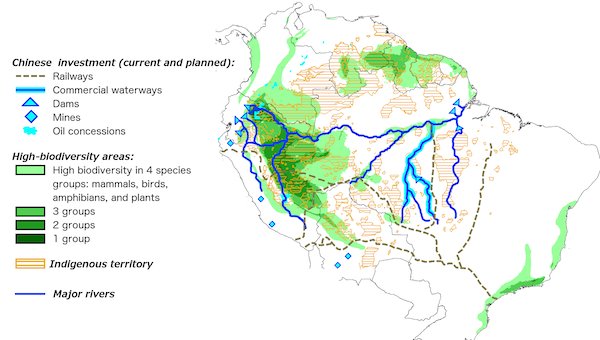
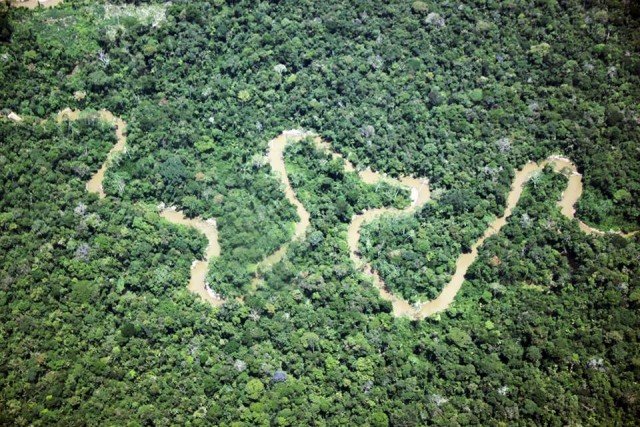
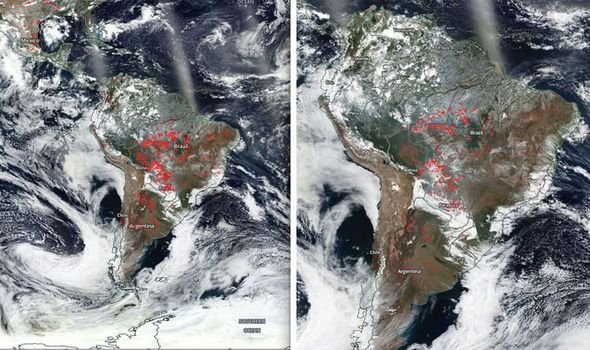
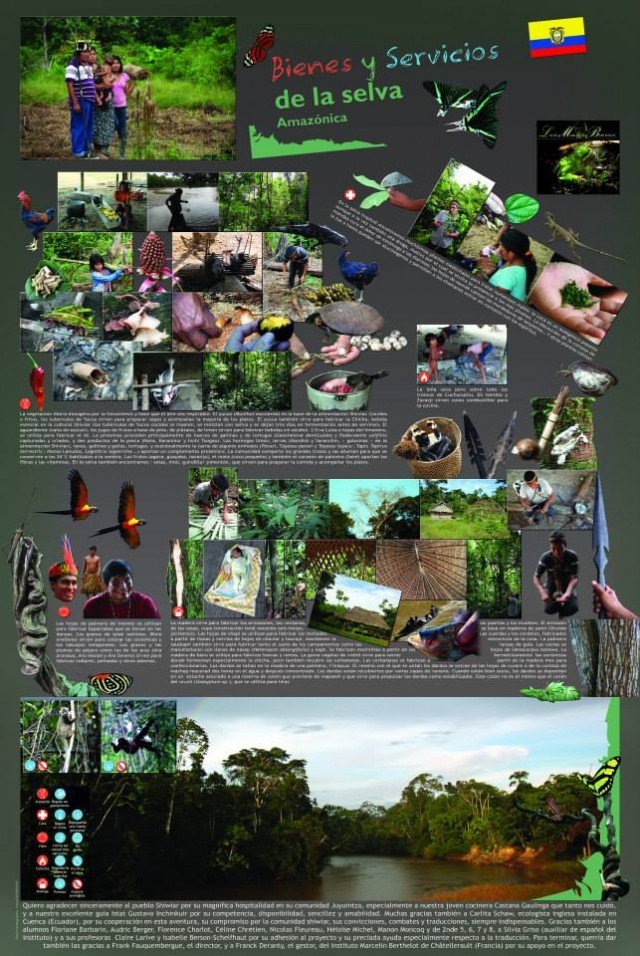
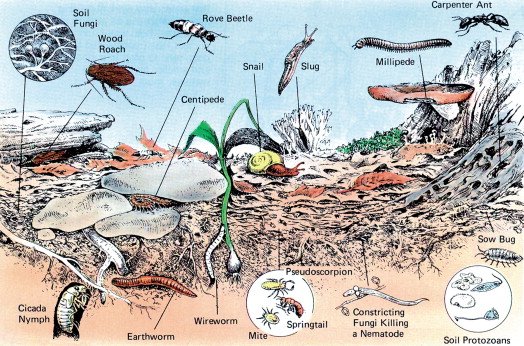
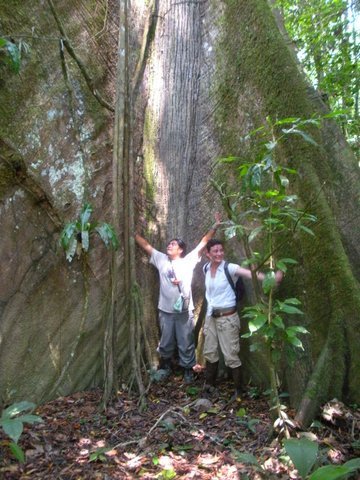
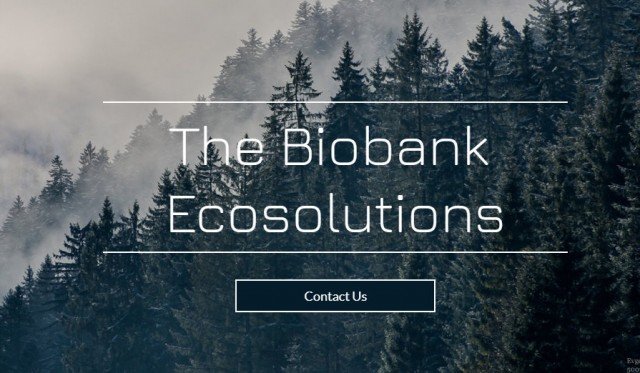
Brilliant idea! I don't really have much to contribute at the moment but would love to get involved with it. Wishing the project much success 💯🐒